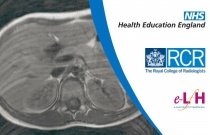Renal Failure Diagnosis and Management
Clarisa Choh and Ramesh B Naik
This session outlines the definition and common causes of acute and chronic renal failure. By the end of the session you should be able to list the common causes of renal failure and describe how renal failure should be managed.
Antimicrobial Prophylaxis
Shabnam Iyer and Ridzuan Farouk
0.50 Hours
This session defines surgical site infections (SSIs) and explains the principles of antibiotic prophylaxis, including risks and benefits. It outlines alternatives available for those patients with penicillin allergy.
Ethics - Human Rights
Stephen Ellis
0.50 Hours
This session examines the articles of The Human Rights Act 1998 that have implications for healthcare.
Radiopharmaceuticals
Helen Blundell and Wil Evans
1.00 Hours
This session describes the principles of production of radionuclides and their use in the manufacture of radiopharmaceuticals. Particular emphasis is given to the technetium-99m (99mTc) generator and the facilities and procedures required for safe and sterile production of 99mTc-labelled radiopharmaceuticals. The mechanisms of a....
Biological Effects of Radiation Exposure on the Embryo, Fetus and Infant
Colin Martin
0.50 Hours
Tissues in the developing embryo and fetus contain many proliferating cells, and are more susceptible to radiation damage. The potential effects vary with the stage of fetal development, but growth retardation, involving brain development, can occur at higher doses. In addition, there appears to be an increased risk of childhood....
Practical Use of X-ray Sets
Chris Taylor
0.50 Hours
This session builds on the knowledge you have gained about the production of x-rays and the design of x-ray equipment. It covers the practical operation of x-ray sets in order to produce good quality images, minimise radiation dose to the patient and prevent damage to equipment.
Communicating with Patients - Radiology
Maria Sheridan
0.50 Hours
This session looks at the application of generic communications skills.
Report Writing - Radiology
Maria Sheridan
0.50 Hours
This session covers the steps involved in writing an imaging report.
Diabetes Mellitus for the Anaesthetist
Paul Edgar
All anaesthetists will encounter diabetic patients on a regular basis and need, therefore, to be aware of the implications of the disease and its treatment for the perioperative period. In this session you will review the pathophysiology of Diabetes Mellitus and its treatment, focussing on aspects most relevant to your anaesthet....
Anaemia - Anesthesiology
Julian Dimech and Gareth Kessell
0.50 Hours
This session will review the definition and classification of anaemia. It will also review symptoms, signs and investigations used in the management of anaemic patients and conclude with a section on the risks of anaesthetizing anaemic patients.
Properties of Ionising Radiation
Nicole Jessop
0.50 Hours
This session provides a brief introduction to the properties of ionising radiation. It is aimed at staff who wish to refer patients for medical examinations that use x-rays or radioactivity.
Biological Effects at High Doses - Radiology
Stacey McGowan and Louise Bendall
0.50 Hours
This session describes deterministic effects at high doses, such as those used in radiotherapy, interventional radiology or therapeutic nuclear medicine.
Approach to a Bone Lesion - Radiology
Paul O'Donnell and Martin Watson
0.50 Hours
This session provides a framework for radiographic analysis of focal bone lesions. Aggressive and non-aggressive features that aid in characterising a lesion are described.
Chronic Osteomyelitis - Radiology
Michael Crawford and Andoni Toms
0.25 Hours
This session depicts the aetiopathology of chronic osteomyelitis and its corresponding plain films, computed tomography (CT), magnetic resonance imaging (MRI), and nuclear medicine findings.
Anatomy of the Hand (Adult) - Radiology
Dorothy Keane
0.50 Hours
This session will look at the anatomy of the hand.
Anatomy of the Radius and Ulna (Adult) - Radiology
Paul O'Riordan
0.50 Hours
This session will look at the anatomy of the radius and ulna.
Anatomy of the Elbow (Adult) - Radiology
Sarah Gallimore
0.50 Hours
This session will look at the anatomy of the elbow.
Anatomy of the Calcaneum (Adult) - Radiology
Kevin Harvell and Kathy Dewar
0.50 Hours
This session will look at the anatomy of the calcaneum.
Anatomy of the Elbow (Paediatric) - Radiology
Nick Woznitza
0.50 Hours
This session will focus on the anatomy and bone development of the elbow.
Anatomy of the Shoulder and Humerus (Paediatric) - Radiology
Joanne Hargreaves
0.50 Hours
This session will focus on the anatomy and bone development of the shoulder and humerus.
Chronic Post-surgical Pain
Jane Quinlan
0.50 Hours
This session describes the incidence of chronic pain after various types of surgery, the possible patient-related and procedure-related risk factors for the development of chronic post-surgical pain and suggested interventions to prevent the transition from acute to chronic pain.
Cryptosporidiosis and Microsporidiosis - HIV
Rachael Jones
This session will cover the aetiology, clinical features, natural history, diagnostics and treatment of cryptosporidiosis and microsporidiosis.
Care Post Heart Transplant - ICM
Stephen Pettit and Kiran Salaunkey
0.50 Hours
This session describes the principles of care in the immediate and delayed postoperative period, including the commonly occurring complications as well as strategies to optimize cardiac function by using mechanical circulatory support.
Differentiating COPD and Asthma
John Hurst
0.25 Hours
COPD and asthma are both common conditions that affect the airways and can present in similar ways. It is important to differentiate between the two and understand how this can be done. This session is designed to address these questions.
Paediatric Body MRI
Oystein E Olsen
0.50 Hours
This session discusses paediatric magnetic resonance imaging (MRI), including the differences between computed tomography (CT) and MRI. Topics such as signal-to-noise ratio (SNR), motion artefact and image contrast are also covered.
























